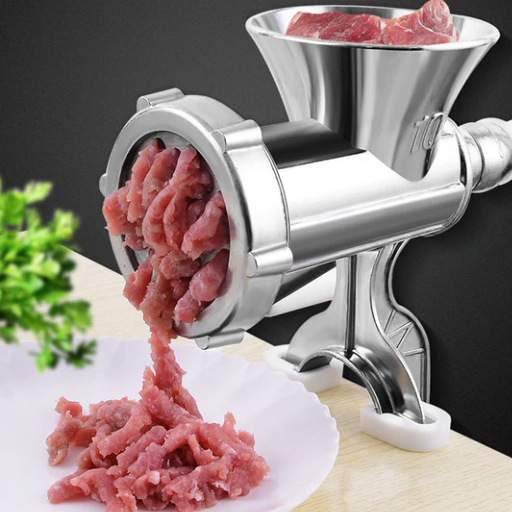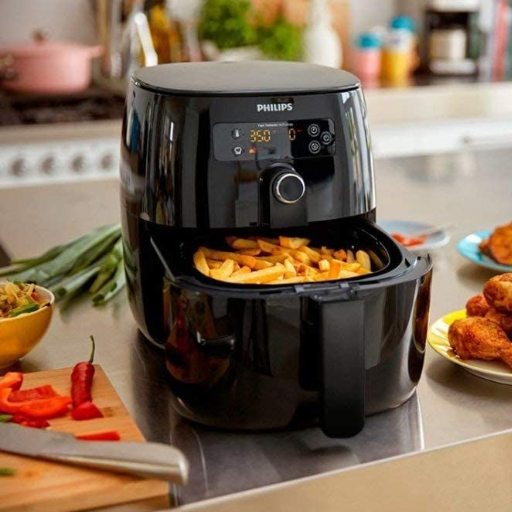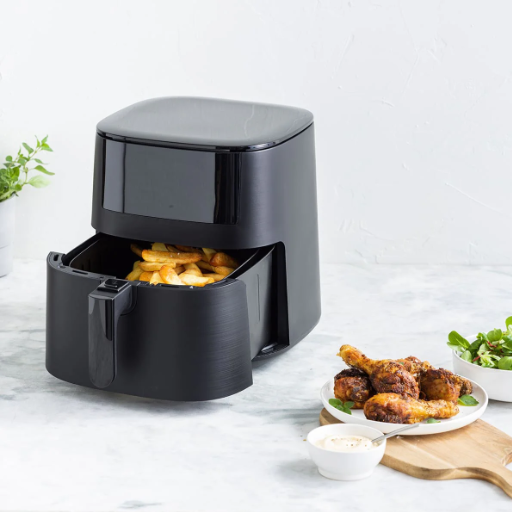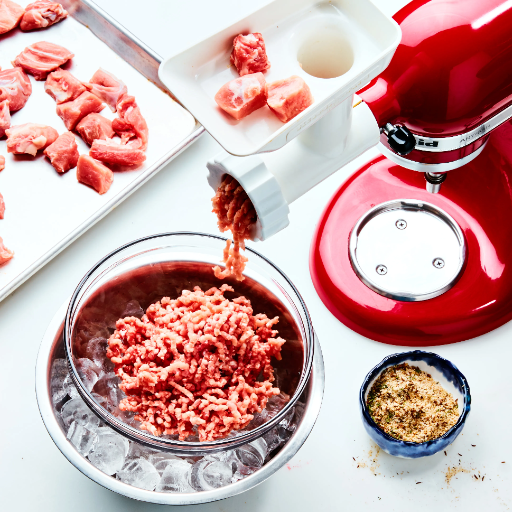If you’re passionate about cooking and want complete control over the quality and flavor of your food, an electric meat grinder and sausage stuffer is an essential tool for your kitchen. This versatile appliance lets you grind fresh meat, create custom blends, and craft homemade sausages with ease, elevating your culinary experience. In this guide, we’ll explore the key features to look for in an electric meat grinder, the benefits of owning one, and a curated list of the best models available on the market. Whether you’re a beginner or a seasoned chef, this article will arm you with the knowledge you need to make an informed purchase.
What are the benefits of owning a meat grinder for home use?

Owning a meat grinder offers numerous advantages for home cooks. Firstly, it gives you full control over the quality and freshness of the meat you use, allowing you to avoid preservatives, additives, and questionable ingredients often found in store-bought ground meats. Secondly, a meat grinder provides incredible versatility; you can create custom blends, grind different types of meat, and even prepare items like sausages, burgers, and meatballs tailored to your taste. Additionally, it can save money in the long run, as purchasing whole cuts of meat and grinding them at home is often more affordable than buying pre-ground options. Finally, a meat grinder can enhance food safety by allowing you to handle and clean the grinding process yourself, reducing the risk of contamination. This appliance is a valuable tool for anyone who values freshness, customization, and quality in their cooking.
How can a meat grinder save you money on grocery bills?
There are several benefits associated with a meat grinder. It provides economical convenience by allowing you to purchase meat in bulk at a cheaper price and grind it yourself, which is usually cheaper than purchasing pre-ground meat. A meat grinder also provides value by minimizing waste since the machine can utilize trimmings or leftovers, maximizing the purchase. Grinding your own meat ensures better value in terms of quality and freshness compared to the already packaged fillers.
What types of dishes can you prepare with freshly ground meat?
With freshly ground meat everything is possible in the kitchen and there are various ways of preparing tasty and versatile dishes. Some of the popular ones are making hamburgers, meatballs, and meatloaf. These can easily be spruced up with other ingredients and spices of your choosing. Tacos, burritos, and stuffed peppers also take their shredded meat flavor to the next level. What’s even better, it is the best ingredient for homemade sausages, kebabs, and ravioli stuffing. Ground meat is the basis for comforting food like chili, spaghetti Bolognese, or sheperd’s pie, but can also be a healthier choice when used in lettuce wraps or zucchini boats. The best part about these dishes is that their taste and quality gets elevated even more because the dishes are cost-effective.
How does grinding your own meat improve food safety?
To begin with, nobody can deny that the safety of food is greatly improved when one grinds meat at home because of the numerous steps that can be controlled. One of the best is that meat sold at supermarkets is most often a mixture of portions from different animals which increases chances of contamination and spread of pathogenic bacteria such as E. coli and Salmonella.Therefore, the level of contamination in pork is much higher than what is experienced when people cook and blend the meat at home. Additionally, cleaning and sanitizing pork cuts prior to selection is also possible. In addition, grinding meat just a few minutes before cooking guarantees minimal bacterial puke while the meat sits waiting to be cooked. Under these circumstances, there will be more hygienic, fresher, and more tasty meals.
Which features should I look for in an electric meat grinder?

Important features of an electric meat grinder determine its functionality, durability, and ease of use. Look for one that has a powerful motor for different kinds of meat and multiple grinding plates for various textures. For easier cleansing and durability, stainless steel is preferred. Reverse function is also important to facilitate unclogging of jams, and non-slip feet help keep the grinder stable during use. In addition, purchase grinders that come with more versatile attachments, such as those for making sausage and kibbe, to increase their functionality. Finally, check if the grinder is easy to control and has adequate safety features for a better experience.
What is the ideal power range for a home-use electric meat grinder?
For household requirements, a home-use electric meat grinder is most effective when its power output is between 300 watts to 800 watts. On the lower end of the power spectrum for grinders, from 300 to 500 watts, is ideal for light use, like grinding small portions of meat occasionally. For moderate to heavy use and those who process tougher cuts of meat frequently, a 500 to 800-watt grinder is recommended. Higher powered grinders above 800 watts are also more efficient and versatile as they can process bones and frozen meat more rapidly, making them suitable for home kitchens.
How important are stainless steel components in a meat grinder?
Stainless steel components are highly important in a meat grinder due to their durability, hygiene, and performance. Stainless steel resists rust and corrosion, ensuring the longevity of your grinder even with frequent use or exposure to moisture. These components are easy to clean and maintain, reducing the risk of cross-contamination, which is crucial for food safety. Additionally, stainless steel blades and plates retain sharpness longer, allowing for consistent and efficient grinding. Opting for a grinder with stainless steel parts ensures reliability and reinforces its ability to handle a variety of tasks effectively.
What grinder plates and accessories should be included?
When selecting a grinder, it’s important to consider a variety of plates and accessories to maximize functionality. Grinder plates typically come in multiple sizes for different levels of coarseness—coarse plates (around ⅜ inch) are excellent for sausages, medium plates (around ¼ inch) work well for ground beef, while fine plates (around ⅛ inch) are ideal for making smooth pâtés or burgers. Look for plates made from durable materials such as stainless steel to ensure longevity.
Essential accessories include a meat pusher or stomper, which aids in feeding the grinder efficiently and safely, and sausage stuffing tubes for creating homemade sausages of varying widths. Additionally, a cleaning brush or tools specifically designed for clearing grinder plates and components can make maintenance easier. Some grinders also offer optional attachments, such as pasta makers or vegetable slicers, which expand their versatility beyond meat preparation. Selecting the right combination of plates and accessories allows you to customize your grinder to suit a wide range of culinary needs.
How do I choose between a manual and an electric meat grinder?

Choosing between a manual and an electric meat grinder depends on your specific needs and preferences. Manual grinders are more affordable, compact, and ideal for occasional use or small quantities of meat. They require physical effort and are best suited for those who enjoy a hands-on approach. Electric grinders, on the other hand, are faster, more efficient, and perfect for processing larger amounts of meat with minimal effort. They are often equipped with powerful motors and additional features, making them a convenient choice for frequent or bulk meat grinding. Consider your usage, budget, and the volume of meat you plan to process when making your decision.
What are the advantages of a manual meat grinder?
Their affordability makes them the ideal option for budget-conscious buyers when compared to electric models. Additionally, they are perfect for outdoor settings as they do not require any form of electricity. Another advantage that manual meat grinders offer is that they provide users with complete control of the grinding process. On top of that, these grinders are, on average, easier to clean and more compact. This makes them a great solution for users who value practicality, durability, and simplicity.
When is an electric meat grinder the better choice?
Electric meat grinders stand out as the ideal option when speed, efficiency, and the ability to process large volumes of meat are critical. They are best suited for high-volume activities like meat processing for events, catering, or meal prepping since they save time and energy. Their considerable effort-saving functionality saves time and reduces manual effort. Electric grinders are usually equipped with powerful motors, as well as several advanced features, like multiple grinding plates, sausage stuffing add-ons, and reverse functions, making them more versatile and convenient. For people who regularly process meat or prefer convenience and consistency, electric meat grinders are a more practical timesaving option than manually operated grinders.
Can a food processor replace a dedicated meat grinder?
Food processors are capable of grinding meat; however, using one in place of a meat grinder is less than ideal. As with every multi-functional appliance, food processors are able to grind meat; the problem, however, stems from the fact that it does not achieve the desired standard of consistency needed to properly serve most of the purposes of a meat grinder. For example, the blade of the food processor will likely end up producing chunky minced beef. If the chunked meat is too coarse, it makes it difficult to prepare some meals such as burgers and sausages. Apart from that, meat grinders do that job more efficiently. They are more effective, however, because they allow the user to have greater flexibility and control when it comes to cooking the meat to the desired degree and how fine it is ground of the meat so that the taste is retained and not altered along with the texture. While a food processor can sometimes be used in place of a meat grinder, it can be clearly concluded that the meat grinder is far more efficient for specialized meat preparation.
What’s the process for making sausage with a meat grinder and stuffer?

To make sausage using a meat grinder and stuffer, start by preparing your ingredients. Select fresh meat, such as pork or beef, and cut it into small chunks that will fit into the grinder. Season the meat with spices, herbs, and any additional ingredients according to your recipe. Chill the seasoned meat and the grinder components in the refrigerator or freezer to keep everything cold, which helps maintain the texture and prevent the meat from overheating.
Next, assemble your meat grinder and run the chilled meat through the grinder, using the appropriate plate size for the desired coarseness. Once ground, mix the meat thoroughly to evenly distribute the seasonings and ensure a consistent blend. Attach the sausage stuffer to your grinder and load the casing onto the stuffer tube. Slowly feed the prepared meat mixture into the stuffer, carefully guiding the casing as it fills. Be mindful to avoid air pockets by applying steady pressure and twisting the sausage into links at regular intervals if desired. Once complete, refrigerate or cook the sausages promptly.
How do I prepare meat for grinding and sausage making?
To prepare meat for grinding and sausage making, start by choosing fresh, high-quality cuts of meat such as pork shoulder, beef chuck, or turkey thighs, as these provide the ideal balance of meat and fat. Trim away excess sinew, cartilage, and any unwanted gristle to ensure a smoother grind. Next, cut the meat into small, uniform chunks (typically 1-2 inches) to fit easily into your grinder and prevent jamming. For optimal grinding results, chill the meat and grinder parts in the freezer for about 20-30 minutes. Cold meat reduces smearing and helps maintain a clean, even texture. Finally, season the meat with your desired spices and herbs just before grinding to allow flavors to blend seamlessly throughout the sausage.
What’s the proper technique for stuffing sausages?
In order to maintain an organized approach towards sausage stuffing, begin by preparing either a sausage stuffer or a grinder with a stuffing tube placed onto it. Then take a fully prepared casing and slide it over the tube while ensuring a few inches of casing remains unfilled. Tie up the open end using a knot in order to prevent any fillings from leaving the casing. For ease of handling without friction during stuffing, moisten the casing using water.
When stuffing, do it in small portions, putting seasoned ground meat into the stuffer or the grinder and applying some steady pressure for consistent filling of the casing. Caution is needed when stuffing with meat as the casing can burst due to overstuffing. Fill the casing with your hand guiding the filling while applying mild pressure for a smooth flow. Regularly twist the sausage to the preferred length while pinching the threads for definition. Afterward, complete the process by pricking small holes to let out accumulated air that prevents gas from building up and causing the meat to split while cooking.
How do I use sausage stuffer tubes effectively?
Unfilled packs and broken casings are the two major mistakes made when stuffing meat, but they can be easily prevented. Start with selecting an appropriately sized tube. After that, attach the tube to the sausage stuffer. Take the pre-cut edge casing and attach it to the tube, ensuring that there is a material of about 1 inch to tie off the casing at the end. Once the meat mixture is placed in the stuffer hopper, make sure there are no air pockets. Commence stuffing with a steady but slow even tempo while projecting moderate force on the stuffer, allowing the meat to flow into the casing. Additional flavor enhancing ingredients such as MSG or Monosodium Glutamate can be added, allowing for slightly more meat mixture to be fed. Try not to go excess, or will fill split casings. When the casing is filled, twist the sausage into links and release gas by letting air escape through pin pricks in the casing at each twist. The key to consistency lies in practice.
How much meat can I process with a home meat grinder?

The amount of meat you can process with a home meat grinder depends on the grinder’s size, motor power, and capacity. Most standard home meat grinders can handle between 2 to 6 pounds of meat per minute, making them suitable for small to medium-scale processing. For larger quantities, frequent breaks may be required to prevent the motor from overheating.
What’s the typical capacity of a home-use meat grinder?
The capacity of a home-use meat grinder can vary depending on the model and motor strength. On average, entry-level grinders process about 1 to 3 pounds of meat per minute, making them ideal for small batches. Mid-range models can handle 4 to 7 pounds per minute, offering more versatility for regular use. High-end, heavy-duty grinders designed for home use may process up to 10 pounds of meat per minute.
How long does it take to grind different amounts of meat?
The duration of meat grinding is directly proportional to the motor power of the grinder and the amount being ground. Lesser competent grinders use for 1-3 pounds of meat take an average of roughly 1-2 minutes. 4-7 mid range grinders take approximately 2-3 minutes to do so, and high-end models can use 10 pounds of meat per minute, taking under a minute to complete the task. Pre-cut versus non-precut along with the type of meat and fat content are factors that influence time taken to process meat.
What’s the best way to clean and maintain my meat grinder after use?
Appropriate cleaning and maintenance of a meat grinder enhances its service life and keeps the food safe. Ensure the meat grinder is unplugged before you try washing it. The first thing you should do is breakdown all removable parts. For any tight spots, use a small washer or brush to scrub clean. Remember not to immerse any appliance parts into water, rather, wipe them using a moist cloth. Let all the parts dry out completely before rusting becomes an issue. It’s a good idea to coat the metal parts with a non-toxic mineral oil for additional protection. Check on the meat grinder’s edges to see if they are inline with the needed sharpness, and if not, adjust them. It is best to keep disassembled pieces in a dry area along with some desiccants to soak up any moisture.
Can I use my meat grinder for other food processing tasks?

Yes, meat grinders can be versatile tools for a variety of food processing tasks beyond grinding meat. You can use them to grind vegetables for soups, sauces, or fillings; create homemade sausages or burger mixes; and even make breadcrumbs or mince certain fruits for jams and chutneys. Some models come with additional attachments, such as slicers or juicers, to expand functionality further. However, always check your manufacturer’s guidelines to ensure your grinder is suitable for these tasks, as not all models are designed for multi-purpose use. Proper cleaning after any usage is essential to maintain performance and hygiene.
What other foods can I grind besides meat?
Meat grinders, like other devices, come with some restrictions. For instance, they can grate ready-to-use cheeses, and can also grind carrots, zucchini, or peppers to be used in sauces and soups. Not only that, nutter butter can be processed, and even wheat and oat grains can be milled into flour. Stale bread can also be converted to breadcrumbs or pet food along with fruits for purees to be used in desserts and jams. Just remember that user manuals should always be checked for these kinds of things beforehand! After every use, thorough cleaning of the grinder is equally as important.
How can I use my grinder to make vegetarian dishes?
There are numerous vegetarian dishes that you can prepare using the grinder. You can make your own veggie burger or falafel patties by grinding cooked lentils, chickpeas, or beans. Further, you can grind vegetables such as zucchini, carrots, and cauliflower, for vegetarian fritters or meat substitutes like quiche or veggie frittata. Using herbs, nuts, and cheese, you can make homemade pesto or fresh sauces. For snacks or breakfast, grind grains into flour for bread or pancake batter. Don’t forget to grind nuts for nut butter or sunflower seeds for delicious and nutritious spreads. There is no question that your grinder can help you make delicious vegetarian meals.
References
Frequently Asked Questions (FAQ)
Q: What are the benefits of using a heavy duty meat grinder for home kitchen use?
A: A heavy duty meat grinder is ideal for home kitchen use as it can efficiently process large quantities of meat, ensuring a consistent texture and quality. It is especially beneficial for making homemade sausages, burgers, and ground meat dishes without preservatives.
Q: How does a meat grinder attachment work with a mixer?
A: A meat grinder attachment connects to the power hub of your mixer, utilizing the mixer’s motor to turn the grinder. This allows you to grind meat efficiently without needing a separate machine, making it a versatile addition to your kitchen equipment.
Q: What should I look for in a stainless steel meat grinder?
A: When selecting a stainless steel meat grinder, consider the build quality, motor power, ease of cleaning, and included accessories like grinder knives and sausage stuffer attachments. Stainless steel ensures durability and resistance to rust.
Q: Can a hand grinder effectively process meat for burgers?
A: Yes, a hand grinder can effectively process meat for burgers, though it requires more manual effort compared to an electric version. It’s ideal for small batches and gives you control over the coarseness of the grind.
Q: What is the advantage of having a 3 sausage tubes attachment with a sausage maker?
A: A sausage maker with 3 sausage tubes allows you to make different sizes of sausages, offering versatility in your sausage-making endeavors. This feature is perfect for creating a variety of sausages, from breakfast links to larger dinner sausages.
Q: How much meat can a heavy duty meat grinder electric handle?
A: A heavy duty meat grinder electric can typically handle several lbs of meat per minute, making it suitable for both home cooks and small-scale commercial use. This capacity allows for efficient meat processing without frequent breaks.
Q: Is it necessary to have a meat mincer machine for homemade sausage?
A: While not necessary, a meat mincer machine simplifies the process of making homemade sausage by ensuring a consistent grind and texture. This appliance can enhance the quality of your sausages by allowing for precise control over the meat mixture.
Q: What maintenance is required for a grinder sausage stuffer?
A: Regular maintenance of a grinder sausage stuffer includes cleaning all parts thoroughly after each use, sharpening grinder knives periodically, and lubricating moving parts if recommended by the manufacturer. Proper maintenance ensures optimal performance and longevity.
Q: Can a countertop grinder be used for both meat and vegetables?
A: Yes, a countertop grinder can often be used for both meat and vegetables, making it a versatile food grinder. However, it’s important to clean the machine thoroughly between uses to prevent cross-contamination and ensure flavors remain distinct.
Q: What are the advantages of using a clamp-on hand grinder?
A: A clamp-on hand grinder offers portability and doesn’t rely on electricity, making it ideal for outdoor settings or situations where power is unavailable. It securely attaches to a countertop, providing stability during use.






